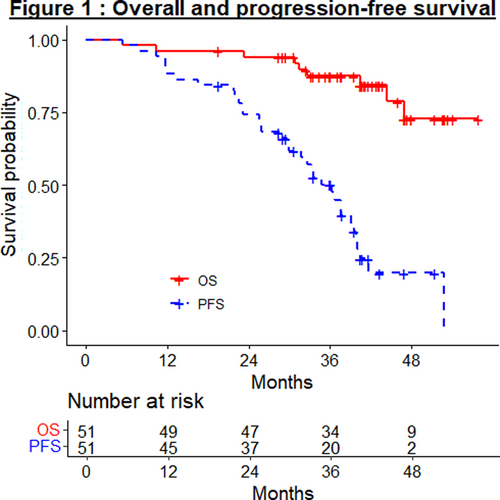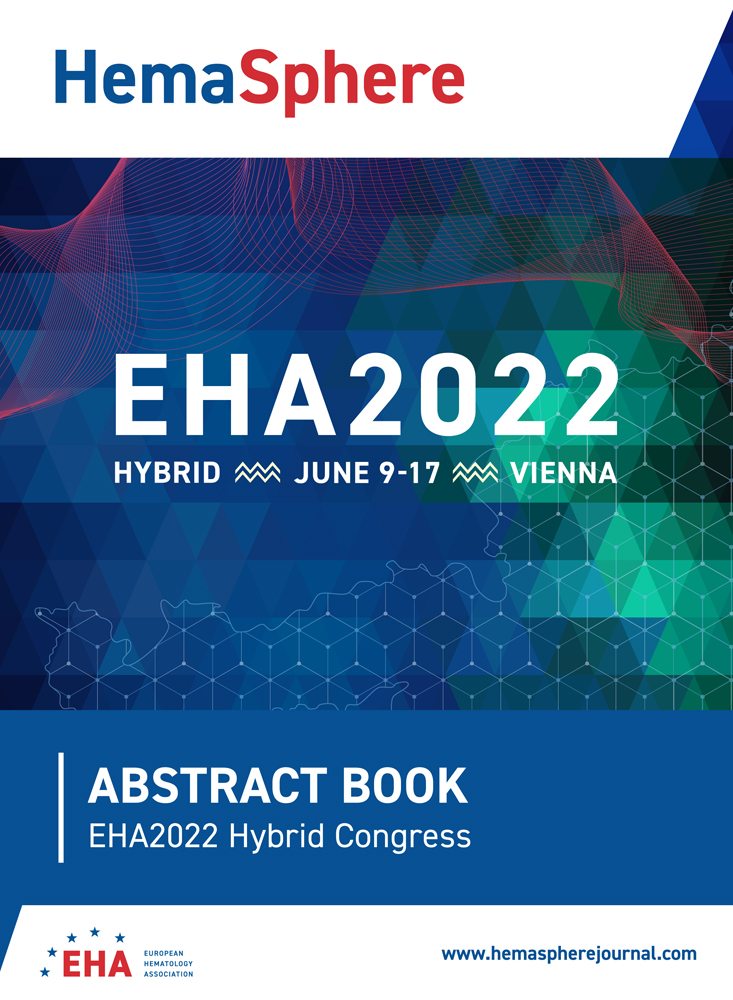P957: CARFILZOMIB, LENALIDOMIDE, DEXAMETHASONE FOLLOWED BY A SECOND AUTO-HCT IS AN EFFECTIVE STRATEGY IN FIRST RELAPSE MULTIPLE MYELOMA: A STUDY OF THE CHRONIC MALIGNANCIES WORKING PARTY OF EBMT
Background: Multiple myeloma (MM) is an incurable hematologic malignancy despite recent therapeutic advances. In the context of lenalidomide-sensitive relapse, one of the preferred options from EHA/ESMO and IMWG recommendations is the combination of carfilzomib-lenalidomide-dexamethasone (KRd). This regimen has been approved based on the ASPIRE trial with a PFS of 26.3 months vs 17.6 months for Rd alone (HR = 0.69, p=0.0001). In younger patients, a second autologous hematopoietic cell transplantation (auto-HCT) remains an option in case of a prolonged remission after frontline auto-HCT. Only few data are available on the combination of KRd followed by a second auto-HCT in first relapse.
Aims: Primary objective was to estimate progression-free survival (PFS) and overall survival (OS) in patients who received a second line of treatment with KRd followed by a second auto-HCT. Secondary objectives were to assess the response rates and identify statistically significant co-variables on PFS and OS in this population.
Methods: This international retrospective study was performed in 22 centers affiliated to the European Society for Blood and Marrow Transplant Society (EBMT). Patients with MM were included if they received a second line of treatment with KRd induction followed by a second auto-HCT between January 2016 and December 2018.
Results: A total of 51 patients were included, with a median age of 62 years (range 35 – 69). ISS at diagnosis was stage I for 18 patients (35.3%), stage II for 11 (21.6%),stage III for 14 (27.5%) and missing for 8 patients (15.7%). Twenty-seven patients (52.9%) were of standard cytogenetic risk and 11 patients (21.6%) of high cytogenetic risk according to IMWG criteria, data was missing for 13 patients (25.5%). The median time between the 1st to the 2nd transplant was 40.4 months (range 17.9–87.9). Regarding the number of cycles of KRd received in induction, 25 patients received 3 or 4 cycles (49.0%), 17 patients 5 or 6 cycles (33.3%) and 9 patients 7 to 12 cycles (17.7%). The conditioning chemotherapy was melphalan alone in 46 patients (90.2%), a combination of melphalan and another drug in 4 patients (7.8%) and cyclophosphamide alone in 1 patient (2.0%). The median follow-up was 36.7 months (range 5.3-58.0). The median PFS was 32.6 months (95%CI: 30–39.9) and the median OS was not reached, while 36- and 48-months OS rates were 87.5% (95%CI: 78.5–97.4) and 72.8% (95%CI: 57.0–92.8) respectively. In univariate analysis, 2 co-variates were found to be associated with a longer median PFS: an interval between the first and the 2nd auto-HCT of more than 4 years (mPFS of 36.1 vs. 30.6 months, p = 0.02) and the achievement of a very good partial response (VGPR) or better at the 2nd transplant (mPFS of 33.5 vs. 27.8 months, p = 0.01). These results were also observed in multivariate analysis, with HR of 0.41 (95%CI: 0.17-0.96, p = 0.04) and HR of 0.45 (95%CI: 0.21-0.98, p = 0.04), respectively. No statistical association was found between the duration of PFS and cytogenetic risk profile, with the limitation of a small number of patients with high-risk cytogenetics. Regarding OS, no significantly relevant co-variables were found in uni- or multivariate analysis.
Image:
Summary/Conclusion: A second auto-HCT after KRd induction is an effective treatment for patients with a first lenalidomide-sensitive relapse of MM. Our study suggests that patients with at least 4 years of remission after a frontline auto-HCT and who achieved at least a VGPR after KRd induction, benefit the most from this treatment strategy.





